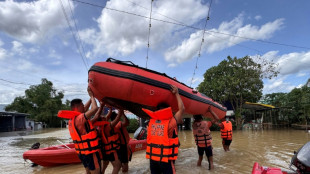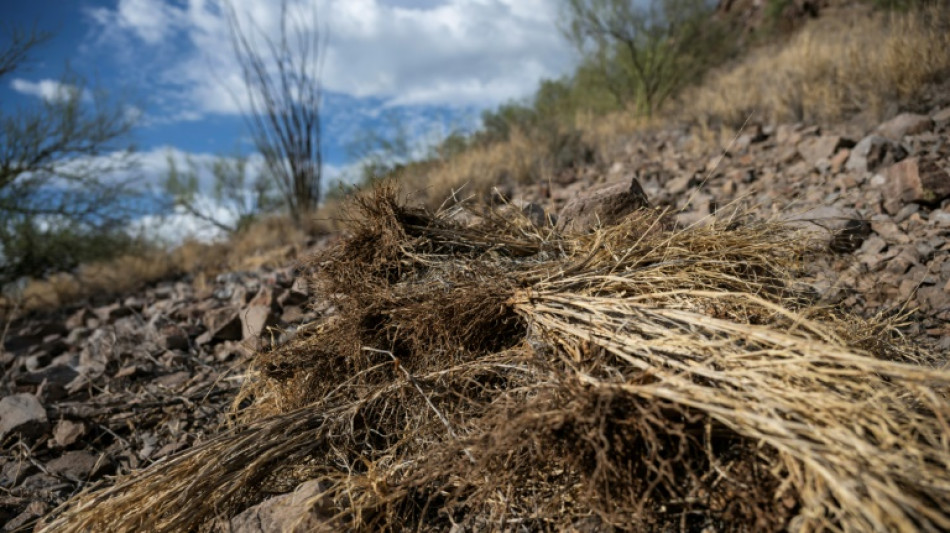
-
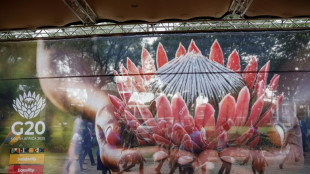 Five things to know about the first G20 held in Africa
Five things to know about the first G20 held in Africa
-
Asian markets rise on hopes over shutdown deal, rate cut

-
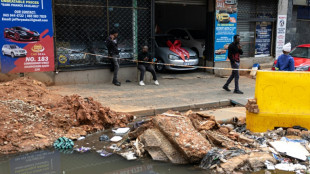 Johannesburg gets rushed makeover for G20 chiefs
Johannesburg gets rushed makeover for G20 chiefs
-
World wine output set for modest 2025 recovery: industry body
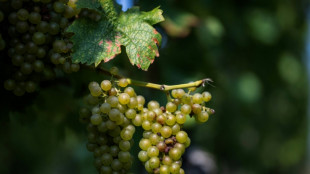
-
 Ukraine justice minister suspended over corruption case: PM
Ukraine justice minister suspended over corruption case: PM
-
Osimhen, Mbeumo potential key figures in African World Cup play-offs

-
 Tanzania politicians in shock as cabal takes over after massacre
Tanzania politicians in shock as cabal takes over after massacre
-
Prague cathedral's long-awaited organ to pipe up in 2026

-
 Australia's Hazlewood gets all-clear after Ashes scare but Abbott ruled out
Australia's Hazlewood gets all-clear after Ashes scare but Abbott ruled out
-
Migrant workers in Romania fear wave of hate fuelled by far right

-
 DR Congo ex-rebel leader Lumbala's war crimes trial opens in Paris
DR Congo ex-rebel leader Lumbala's war crimes trial opens in Paris
-
Turkey says military plane crash in Georgia killed all 20 onboard
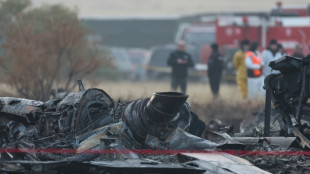
-
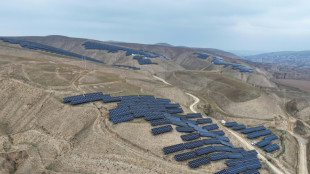 Renewables outpace fossil fuels despite US policy shift: IEA
Renewables outpace fossil fuels despite US policy shift: IEA
-
India bank on formidable home Test record in South Africa series

-
 Australia's Hazlewood in injury scare ahead of first Ashes Test
Australia's Hazlewood in injury scare ahead of first Ashes Test
-
No ordinary Joe: Stokes backs Root to fire in Australia

-
 Humans can no longer tell AI music from the real thing: survey
Humans can no longer tell AI music from the real thing: survey
-
House vote likely Wednesday on ending US government shutdown

-
 Sixers edge Celtics while Thunder reach NBA-best 11-1
Sixers edge Celtics while Thunder reach NBA-best 11-1
-
Cambodia's Prince Group denies link to scams after asset seizures

-
 Stokes bats away criticism of England's Ashes preparations
Stokes bats away criticism of England's Ashes preparations
-
Russia loses legal bid to build embassy next to Australian parliament
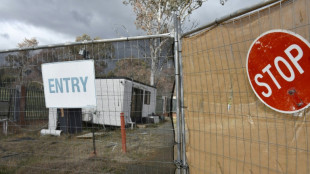
-
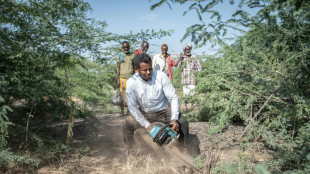 Ethiopia's invasive prosopis tree chokes livelihoods and land
Ethiopia's invasive prosopis tree chokes livelihoods and land
-
'We're already living in science fiction': The neurotech revolution

-
 Ousted Gabon leader's wife and son sentenced to 20 years for graft
Ousted Gabon leader's wife and son sentenced to 20 years for graft
-
Asian markets up on hopes over shutdown deal, rate cut

-
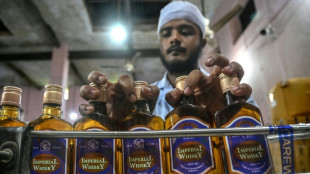 Bangladesh's liquor industry a surprising success
Bangladesh's liquor industry a surprising success
-
Nepal's war victims watch political changes with fragile hope

-
 France aim to secure World Cup place as Paris marks attacks anniversary
France aim to secure World Cup place as Paris marks attacks anniversary
-
Russia jails teen musician over anti-war street songs for third time

-
 Demand for air con set to triple by 2050, warns UN
Demand for air con set to triple by 2050, warns UN
-
Trump claims 'very big victory' as shutdown vote nears

-
 Indigenous protesters clash with security at COP30 summit in Brazil
Indigenous protesters clash with security at COP30 summit in Brazil
-
France warns over Caribbean 'instability' as G7 talks open

-
 Brazil tries to avoid climate bust up at COP30 summit
Brazil tries to avoid climate bust up at COP30 summit
-
New Report Reveals Brazilians Face 252 Scam Encounters Annually Despite High Confidence in Spotting Fraud

-
 Xsens Announces New Xsens Link for Motion Capture Across Humanoid Robotics, Health, Sports, and Entertainment
Xsens Announces New Xsens Link for Motion Capture Across Humanoid Robotics, Health, Sports, and Entertainment
-
Apex Critical Metals Confirms Significant Magnetic Anomaly at Cap Project, British Columbia

-
 Empire Metals Limited Announces Diamond Drilling Ahead of Pilot-Scale Testwork
Empire Metals Limited Announces Diamond Drilling Ahead of Pilot-Scale Testwork
-
Evotec Receives Milestone Payment from Bristol Myers Squibb Following IND Acceptance in Strategic Protein Degradation Partnership

-
 ZOQQ Expands Its Enterprise Fintech Platform to Empower Global Business Growth Through Seamless Multi-Currency, Card, and Cross-Border Payment Solutions
ZOQQ Expands Its Enterprise Fintech Platform to Empower Global Business Growth Through Seamless Multi-Currency, Card, and Cross-Border Payment Solutions
-
Ethiopia set to host UN's 2027 climate summit, 2026 undecided

-
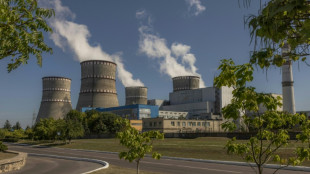 Close Zelensky ally accused of orchestrating major graft scheme
Close Zelensky ally accused of orchestrating major graft scheme
-
'Trump is temporary': California governor Newsom seizes COP30 spotlight

-
 US stocks end mostly higher despite drop in Nvidia
US stocks end mostly higher despite drop in Nvidia
-
Arrival of US aircraft carrier fuels Venezuelan fears of attack

-
 Iraqi voters turn out in numbers as region watches on
Iraqi voters turn out in numbers as region watches on
-
Pakistan upstage Sri Lanka in first ODI as Agha and Rauf shine

-
 Macron warns any planned West Bank annexation a 'red line'
Macron warns any planned West Bank annexation a 'red line'
-
BBC must fight, says outgoing chief as Trump threatens to sue


Invasive firestarter: How non-native grasses turned Hawaii into a tinderbox
After a catastrophic wildfire that killed more than 100 people in Hawaii, eyes have turned toward an unexpected culprit: invasive grass species that have spread massively over the archipelago for decades, serving as the perfect fuel.
Drought-resistant, capable of invading difficult terrain, and gradually muscling out local species, they are also a growing threat in the western United States, where devastating fires are increasing.
"Invasive grasses are very ignitable. They change the landscape," Carla D'Antonio, a professor of ecology at the University of California, Santa Barbara told AFP.
"They make conditions that are more conducive to more fire, and all of a sudden, we just have a lot more fire."
Rather than decomposing when they die, they stay "standing there for a long time, dry as a bone," said D'Antonio, who has been studying these species for more than 30 years. They're also hardy, surviving fires better than native species and gradually replacing them.
Most of these grasses -- buffelgrass, Guinea grass, molasses grass -- came from Africa, and were introduced as pasture for cattle, without knowing the danger they would come to represent decades later.
In Hawaii, the demise of sugar cane plantations in the 1990s as a result of globalization had disastrous consequences: huge tracts of land were abandoned, allowing the invasive species an opening.
"Yes, many parts of Hawaii are trending towards dryer conditions, but the fire problem is mostly attributable to the vast extents of non-native grasslands left unmanaged by large landowners as we've entered a 'post-plantation era,'" said Clay Trauernicht, a fire ecologist at the University of Hawaii at Manoa.
Trauernicht said the annual area burned in Hawaii has increased by 300 percent in recent decades.
A 2021 fire prevention report by Maui County described fires as a growing threat due to increasing temperatures and prolonged periods of drought as a result of climate change, and the growing menace of intrusive grasses.
Hawaii, despite its tropical reputation, is getting drier: a 2016 study found 90 percent of the state received less rain compared to a century earlier.
The Maui County report recommended "an aggressive plan to replace these hazardous fuel sources with native plants to reduce combustible fuel while increasing water retention."
- 'Nothing natural about it' -
The problem isn't confined to Hawaii. Over in the mainland United States, "the deserts of the West and the conifer forests, and then the shrub lands in the coastal zone, invasive grasses are here to stay, they're now part of the ecosystem," said D'Antonio.
She herself spends some Saturday evenings weeding roadsides with neighbors in a mountainous area near Santa Barbara, California. Their goal: to prevent a fire from starting from a cigarette butt or an overheating vehicle.
Most of the major fires of the Mojave and Great Basin have been fueled by invasive grasses, she says, while also citing the Camp Fire of 2018, which destroyed the small California town of Paradise, killing more than 80 people. It was started by a power line igniting dry grass.
"(I'm) not making the mistake of calling it a natural disaster because there's almost nothing natural about it," emphasizes the scientist.
One of the invaders, buffelgrass, also threatens the emblematic cactus of the Saguaro National Park in Arizona, by smothering young saguaros and fueling fires in the region. Organizations regularly organize clearing operations. The same species is spreading in Mexico and in Australia.
According to a 2019 study, six invasive grass species caused fire frequency to increase by up to 150 percent in US ecosystems.
For D'Antonio of UC Santa Barbara, tragedies like that of Hawaii are linked to many factors: the alteration of the landscape by humans, the invasion of alien species, droughts made worse by climate change, but also a lack of preparation.
In the American West, widespread logging of conifer forests in the 19th century and a long history of excessive fire suppression in the 20th century contributed to accumulation of tinder on the forest floor.
"The potential for disaster is huge," said D'Antonio, leaving society with daunting questions to address. "How do we plan for the extreme? Not for the average fire, but the extreme fire?"
C.Garcia--AMWN
